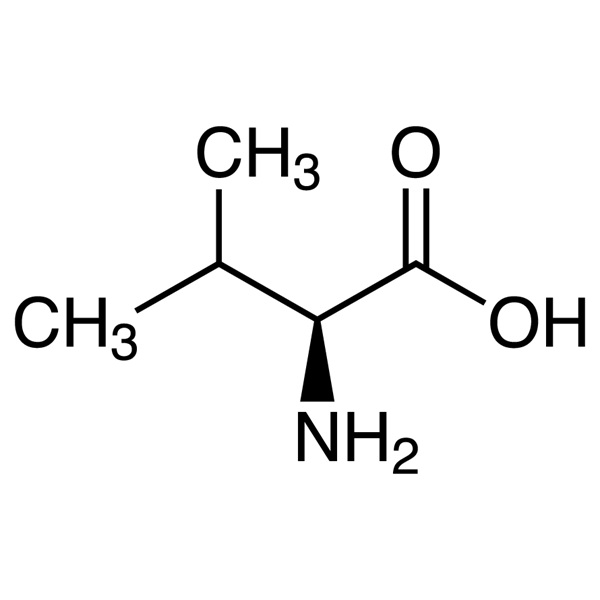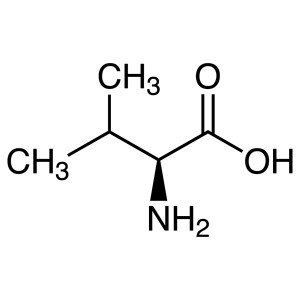L-Valine CAS 72-18-4 (H-Val-OH) Assay 98.5~101.0% Factory High Quality
Shanghai Ruifu Chemical Co., Ltd. is the leading supplier of L-Valine (H-Val-OH; L-Val; Abbreviated Val or V) (CAS: 72-18-4) with high quality, production capacity 10000 Tons per year. As one of the largest amino acids suppliers in China, Ruifu Chemical supplys amino acids up to international standards, such as AJI, USP, EP, JP and FCC standards. We can provide COA, worldwide delivery, small and bulk quantities available. If you are interested in L-Valine, Please contact: alvin@ruifuchem.com
| Chemical Name | L-Valine |
| Synonyms | H-Val-OH; L-Val; Abbreviated Val or V; Laevo-Valine; Valine; (S)-Valine; L-2-Aminoisovaleric Acid; L-2-Amino-3-Methylbutanoic Acid; L-α-Amino-β-Methylbutyric Acid; (S)-alpha-Aminoisovaleric Acid; (S)-α-Aminoisovaleric Acid; L-2-Amino-3-Methylbutyric Acid; (S)-2-Amino-3-Methylbutanoic Acid; (S)-α-Amino-β-Methylbutyric Acid; L-(+)-α-Aminoisovaleric Acid |
| Stock Status | In Stock, Production Capacity 10000 Tons per Year |
| CAS Number | 72-18-4 |
| Molecular Formula | C5H11NO2 |
| Molecular Weight | 117.15 |
| Melting Point | 295.0~300.0℃(subl.) (lit.) |
| Density | 1.23 |
| Water Solubility | Soluble in Water, 85 g/L 20℃, Almost Transparency |
| Solubility | Freely Soluble in Formic Acid. Soluble in Water. Practically Insoluble in Ethanol and in Ether. Dissolves in Dilute Hydrochloric Acid |
| Storage Temp. | Sealed in Dry, Store at Room Temperature |
| COA & MSDS | Available |
| Classification | Amino Acids & Derivatives |
| Brand | Ruifu Chemical |
| Hazard Codes | Xn | RTECS | YV9361000 |
| Risk Statements | 40 | TSCA | Yes |
| Safety Statements | 24/25-36-22 | HS Code | 2922491990 |
| WGK Germany | 3 |
| Items | Inspection Standards | Results |
| Appearance | White Crystals or Crystalline Powder | Conforms |
| Odor | Tastes at First Slightly Sweet and Then Bitter | Conforms |
| Identification | Infrared Absorption Spectrum | Conforms |
| Specific Rotation [α]20/D | +26.6° to +28.8°(C=8, in 6M HCL/USP) |
+27.6° |
| State of Solution (Transmittance) | Clear and Colorless ≥98.0% | 99.3% |
| Chloride (Cl) | ≤0.020% | <0.020% |
| Sulfate (SO4) | ≤0.020% | <0.020% |
| Ammonium (NH4) | ≤0.020% | <0.020% |
| Iron (Fe) | ≤10ppm | <10ppm |
| Heavy Metals (Pb) | ≤10ppm | <10ppm |
| Arsenic (As2O3) | ≤1.0ppm | <1.0ppm |
| Loss on Drying | ≤0.20% (at 105℃ for 3 hours) | 0.16% |
| Residue on Ignition (Sulfated) | ≤0.10% | 0.04% |
| Other Amino Acids | ≤0.20% | Conforms |
| L-Leucine | ≤0.06% | Conforms |
| L-Isoleucine | ≤0.06% | Conforms |
| L-Alanine | ≤0.06% | Conforms |
| Assay | 98.5 to 101.0% (Titration: Dried Basis) | 99.7% |
| pH Test | 5.5 to 6.5 (1.0g in 20ml of H2O) | 5.8 |
| Origin | From Non-Animal Source | Conforms |
| Conclusion | Meets AJI97, USP, EP, JP Testing Specifications | |
| Main Uses | Food / Feed Additives; Pharmaceuticals; etc. | |
L-Valine (H-Val-OH) (CAS: 72-18-4) AJI 97 Test Method
Identification: Compare the infrared absorption spectrum of the sample with that of the standard by potassium bromide disc method.
Specific Rotation [α]20/D: Dried Sample, C=8, 6mol/L HCl
State of Solution (Transmittance): 0.5g in 20ml of H2O, spectrophotometer, 430nm, 10mm cell thickness.
Chloride (Cl): 0.7g, A-1, ref: 0.40ml of 0.01mol/L HCl
Ammonium (NH4): B-2
Sulfate (SO4): 1.2g, (1), ref: 0.50ml of 0.005mol/L H2SO4
Iron (Fe): 1.5g, (2), ref: 1.5ml of Iron Std. (0.01mg/ml)
Heavy Metals (Pb): 2.0g, (2), ref: 2.0ml of Pb Std. (0.01mg/ml)
Arsenic (As2O3): 2.0g, (2), ref: 2.0ml of As2O3 Std.
Other Amino Acids: Dilute ammonia R2 Test Sample: 50μg, F-6-a, control: L-Tyr 0.25μg
Loss on Drying: at 105℃ for 3 hours.
Residue on Ignition (Sulfated): AJI Test 13
Assay: Dried sample, 120mg, (1), 3ml of formic acid, 50ml of glacial acetic acid, 0.1mol/L HCLO4 1ml=11.715mg C5H11NO2
pH Test: 1.0g in 20ml of H2O
L-Valine (H-Val-OH) (CAS: 72-18-4) JP16 Test Method
L-Valine, when dried, contains not less than 98.5% of C5H11NO2.
Description L-Valine occurs as white crystals or crystalline powder. It is odorless or has a faint characteristic odor, and has a slightly sweet taste, which becomes bitter.
It is freely soluble in formic acid, soluble in water, and practically insoluble in ethanol (95).
It dissolves in dilute hydrochloric acid.
Identification Determine the infrared absorption spectrum of L-Valine, previously dried, as directed in the potassium bromide disk method under Infrared Spectrophotometry <2.25>, and compare the spectrum with the Reference Spectrum: both spectra exhibit similar intensities of absorption at the same wave numbers.
Optical rotation <2.49> [a]20D: +26.5°~+29.0° (after drying, 2 g, 6 mol/L hydrochloric acid TS, 25 mL, 100 mm).
pH <2.54> Dissolve 0.5 g of L-Valine in 20 mL of water: the pH of this solution is between 5.5 and 6.5.
Purity (1) Clarity and color of solution Dissolve 0.5 g of L-Valine in 20 mL of water: the solution is clear and colorless.
(2) Chloride <1.03>-Perform the test with 0.5 g of L-Valine. Prepare the control solution with 0.30 mL of 0.01mol/L hydrochloric acid VS (not more than 0.021%).
(3) Sulfate <1.14>-Perform the test with 0.6 g of L-Valine. Prepare the control solution with 0.35 mL of 0.005mol/L sulfuric acid VS (not more than 0.028%).
(4) Ammonium <1.02>-Perform the test with 0.25 g of L-Valine. Prepare the control solution with 5.0 mL of Standard Ammonium Solution (not more than 0.02%).
(5) Heavy metals <1.07>-Proceed with 1.0 g of L-Valine according to Method 1, and perform the test. Prepare the control solution with 2.0 mL of Standard Lead Solution (not more than 20 ppm).
(6) Arsenic <1.11>-Proceed with 1.0g of L-Valine, prepare the test solution according to Method 2, and performthe test (not more than 2 ppm).
(7) Related substances-Dissolve 0.10 g of L-Valine in 25mL of water, and use this solution as the sample solution. Pipet 1 mL of the sample solution, and add water to make exactly 50 mL. Pipet 5 mL of this solution, add water to make exactly 20 mL, and use this solution as the standard solution. Perform the test with these solutions as directed under Thin-layer Chromatography <2.03>. Spot 5mL each of the sample solution and standard solution on a plate of silica gel for thin-layer chromatography. Develop the plate with amixture of 1-butanol, water and acetic acid (100) (3:1:1) to adistance of about 10 cm, and dry the plate at 80℃ for 30 minutes. Spray evenly a solution of ninhydrin in acetone (1 in 50) on the plate, and heat at 80℃ for 5 minutes: the spots other than the principal spot from the sample solution are not more intense than the spot from the standard solution.
Loss on drying <2.41> Not more than 0.30% (1 g, 105℃,3 hours).
Residue on ignition <2.44> Not more than 0.1% (1 g).
Assay Weigh accurately about 0.12 g of L-Valine, previously dried, and dissolve in 3 mL of formic acid, add 50 mL of acetic acid (100), and titrate <2.50> with 0.1 mol/L perchloric acid VS (potentiometric titration). Perform a blank determination, and make any necessary correction.
Each mL of 0.1 mol/L perchloric acid VS=11.72 mg of C5H11NO2
Containers and storage Containers-Tight containers.
Package: Fluorinated Bottle, 25kg/bag, 25kg/Cardboard Drum, or according to customer's requirement.
Storage Condition: Store in sealed containers at cool, dry and ventilated warehouse away from incompatible substances. Protect from light and moisture.
How to Purchase? Please contact Dr. Alvin Huang: sales@ruifuchem.com or alvin@ruifuchem.com
15 Years Experience? We have more than 15 years of experience in the manufacture and export of a wide range of high quality pharmaceutical intermediates or fine chemicals.
Main Markets? Sell to domestic market, North America, Europe, India, Korea, Japanese, Australia, etc.
Advantages? Superior quality, affordable price, professional services and technical support, fast delivery.
Quality Assurance? Strict quality control system. Professional equipment for analysis include NMR, LC-MS, GC, HPLC, ICP-MS, UV, IR, OR, K.F, ROI, LOD, MP, Clarity, Solubility, Microbial limit test, etc.
Samples? Most products provide free samples for quality evaluation, shipping cost should be paid by customers.
Factory Audit? Factory audit welcome. Please make an appointment in advance.
MOQ? No MOQ. Small order is acceptable.
Delivery Time? If within stock, three days delivery guaranteed.
Transportation? By Express (FedEx, DHL), by Air, by Sea.
Documents? After sales service: COA, MOA, ROS, MSDS, etc. can be provided.
Custom Synthesis? Can provide custom synthesis services to best fit your research needs.
Payment Terms? Proforma invoice will be sent first after confirmation of order, enclosed our bank information. Payment by T/T (Telex Transfer), PayPal, Western Union, etc.
L-Valine (H-Val-OH; L-Val; Abbreviated Val or V) (CAS: 72-18-4) is is one of the 20 amino acids that make up proteins, and it is an essential amino acid and a sugar-generating amino acid for mammals. L-Valine is also the 8 essential amino acids and sugar-generating amino acids. L-Valine works with the other two high-concentration amino acids (isoleucine and leucine) to promote normal growth of the body, repair tissues, regulate blood sugar, and provide the energy needed.
Application
1. For Feed Grade Valine:
L-Valine is an essential and indispensable nutrient for pigs and poultry like lysine, theonine, methionine and tryptophan. In practical European formulas, L-Valine is usually considered as the fifth limiting amino acid. As it cannot be sythesized in the body, it needs supplementation from the diets. Valine is a branched chain amino acid along with leucine and isoleucine, involved in many important biological functions. It can help to improve the milk yield for lactating sow and enhance animal's immune.Besides, Valine can improve the feed conversation rate and amino acid efficacy.
2. For Food Grade Valine:
L-Valine is a branched chain amino acid, along with leucine and isoleucine, which are essential to repaire tissue, regular blood glucose and provide energy for human body, especially for vigorous exercise. Therefore, it can be used for sports drink. Besides, Valine can also be used as a food additive in bakery to improve flavor of food. It also employed as nutritional supplements in food and beverage industries. Further, it plays an important role in maintaining mental vigor, muscle coordination and emotional calm. L-Valine is an essential amino acid found in proteins; important for optimal growth in infants and for growth in children and nitrogen balance in adults.
3. For Medicine Grade Valine:
As one of amino acid infusions, L-Valine can be used to treat some liver disease. Besides, valine is one of the precusor substances for synthesis of new drugs.
L-Valine can be used for biochemical research, the preparation of tissue culture media. L-Valine also used as amino acids nutritional drugs in medicine.
L-Valine is also good for correcting the type of amino acid deficiencies that can be caused by drug addiction.
-
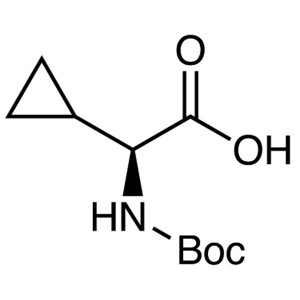
Boc-L-Cyclopropylglycine CAS 155976-13-9 Assay ...
-
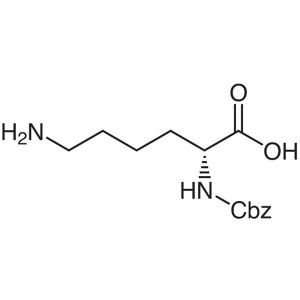
Nα-Cbz-D-Lysine (Z-D-Lys-OH) CAS 70671-54-4 Pur...
-
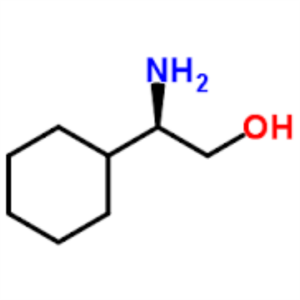
D-Cyclohexylglycinol CAS 85711-13-3 (D-Chg-OL) ...
-
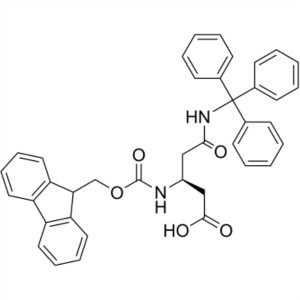
Fmoc-β-HoAsn(Trt)-OH CAS 283160-20-3 Assay >97....
-
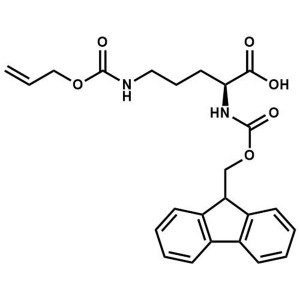
Fmoc-Orn(Aloc)-OH CAS 147290-11-7 Assay ≥98.0% ...
-
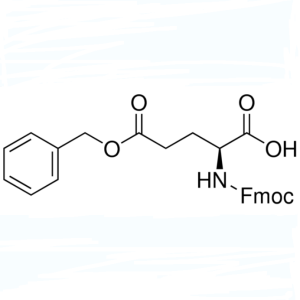
Fmoc-Glu(OBzl)-OH CAS 123639-61-2 Fmoc-L-Glutam...

